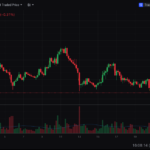Breakout trading is a popular strategy among traders looking to ride the waves of strong price movements. By identifying key levels of support or resistance and acting when these levels are breached, breakout traders aim to capture substantial profits in trending markets. But what makes breakout trading so compelling, and how can you use it effectively? Let’s explore.
What is Breakout Trading?
At its core, breakout trading involves identifying price levels where an asset has historically struggled to move beyond — either up (resistance) or down (support). When the price “breaks out” of these levels, it often signals the beginning of a new trend, providing a ripe opportunity for traders.
Imagine a stock that has consistently failed to rise above $100. If it finally surpasses this mark with strong volume, it could indicate increased interest and momentum, setting the stage for a significant rally.
Why Breakouts Matter
Breakouts are more than just price movements; they represent a shift in market sentiment:
- Bullish Breakouts: A breach of resistance suggests buyers have gained control, driving prices higher.
- Bearish Breakouts: A drop below support reflects a surge in selling pressure, pushing prices lower.
These movements are often accompanied by increased trading volume, which confirms the breakout’s validity. For traders, this is a golden signal to act.
The Anatomy of a Breakout Trade
- Identify Key Levels: Use historical price charts to pinpoint areas of strong support or resistance.
- Confirm with Volume: Breakouts accompanied by high trading volume are more likely to be genuine.
- Enter the Trade: Buy during a bullish breakout or sell during a bearish one.
- Set Stop-Loss Orders: Place stop-losses near the breakout point to manage risk in case of a false breakout.
- Ride the Trend: Let the trade develop, but monitor closely for signs of a reversal.
False Breakouts: The Trap to Avoid
Not all breakouts lead to sustained trends. A false breakout occurs when the price temporarily moves beyond a key level but quickly retreats, leaving traders stuck in losing positions. To minimize this risk:
- Wait for a candle close above resistance or below support.
- Use multiple confirmations, such as RSI or MACD, to gauge momentum.
- Look for strong volume spikes, as weak volume can signal a lack of conviction.
Tips for Success
- Focus on Liquid Markets: High-volume assets are less prone to manipulation, making breakouts more reliable.
- Combine with Other Indicators: Pair breakouts with moving averages or trendlines to increase accuracy.
- Patience Pays: Avoid chasing breakouts too early. Wait for confirmation before entering.
- Embrace Volatility: Breakout trading thrives in volatile markets. Look for assets with strong price fluctuations.
Why Breakout Trading Works
Breakout trading is a psychology-driven strategy. When a key level is breached, it triggers a rush of buy or sell orders, often fueled by FOMO (fear of missing out) or panic. This creates momentum, allowing breakout traders to capitalize on crowd behavior.
Is Breakout Trading Right for You?
Breakout trading suits those who thrive in fast-paced environments and can make decisive moves. It requires discipline, as the allure of potential profits can tempt traders into poorly timed entries.
For experienced traders, breakout strategies can unlock substantial gains during periods of market movement. For beginners, it’s a gateway to understanding market dynamics and building a strong trading foundation.
Final Thoughts
Breakout trading is as much an art as it is a science. By mastering the identification of key levels, confirming with volume, and managing risk effectively, traders can turn market momentum into consistent profits. Remember, while breakouts can be exciting, discipline and a solid plan are essential for long-term success.
Whether you’re eyeing the next bullish breakout or preparing to capitalize on a bearish plunge, breakout trading offers a dynamic way to engage with the markets. But as always, trade wisely and stay informed.







